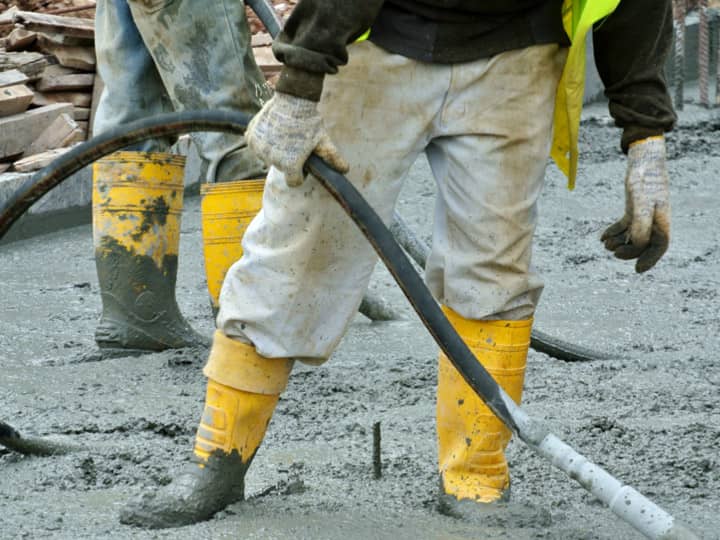For proper compaction of concrete, vibrators play a pivotal role. When the concrete is ready to use, it contains innumerable air bubbles which can deteriorate the concrete structure. The next step is to use concrete vibrators as it eradicates the air bubbles.
During this process one should also keep in mind that over vibration should normally be avoided during the compaction of concrete. If the concrete mix is designed with low workability, over vibration simply consumes extra power of the vibration, resulting in the wastage of energy.
There are different types of concrete vibrators that work on diversified manners. It can be electric or air driven. The vibrators and their functionalities are specified below:
A formwork vibrator works with precast concrete. Formwork vibrators are affixed on the outside of concrete formwork, depending on the thickness of the concrete. Formwork vibrators can also be named as shuttering vibrators.As the vibrators are clamped externally on formwork, the inside concrete mass has a direct effect on it.The compaction time or vibrating time in the formwork vibrator is 1mins to 2mins.The formwork vibrator can vibrate at a speed of 9000 cycles per min.
Surface vibrators can also be defined as jumpers. Once the concrete mix in poured on the surface, then the vibrators are placed on it. This type of vibrator is beneficial to the slabs having depth up to 10inches or 250mm. Surface vibrators are used for the precast slabs and retaining walls. Surface vibrators can give a very smooth surface concrete.
Immersion Concrete vibrator is also called as Internal vibrator. It can also be renamed as Needle vibrator.This vibrator consists of a poker a steel tube with an eccentric element in it, which is closed and rounded at one end. Eccentric elements inside the steel tube cause the vibrations in the concrete.
When using this kind of vibrators, one should always keep in mind to withdraw the device slowly or there will be not enough vibration to expunge the air bubbles formation inside it. These types of vibrators are not to be kept in the concrete for too long, as it could cause the water to separate from the cement, hurting the look and structural integrity of the concrete.
Vibration times will vary depending on the size of vibrator used, the concrete's workability and depth of the concrete member. The concrete vibrating process typically takes between 5 to 15 seconds, if there are still air bubbles in the concrete one needs to remove the vibrator and repeat the process until there are no air bubbles left in the concrete. Contractors must train properly the workers on the proper use of internal vibrators it is important to explain the basic principles of how an internal vibrator works.
The concrete first needs to be handled and poured well. The first step is to ensure that one must have a proper back up system in place for every part of the job, including extra vibrators and other tools. Avoid bending vibrators and keep in mind not to use vibrators as concrete placement tools.
Before initiating the vibration, verification must be properly done that the concrete has not been vibrated previously by any other worker.The vibrator should be let down slowly into poured concrete, allowing the weight of the vibrator to carry it to the bottom of the pour.
Let it sit at the bottom for 10 seconds. Do not turn on the vibrator until the tip is fully immersed. Pull up the vibrator at an average rate of no more than 3 inches per second; often, 1 inch per second yields the best results.Vibrators work different amounts of the poured concrete depending on the strength of the vibrator, which is measured in the circle of concrete affected by the vibration. These circles must overlap so that all the concrete is vibrated properly.
Always hold the vibrator in a vertical position to maximize its effect. Do not force it into the concrete. Concrete sets up in about an hour, and a cold joint is formed between the fresh concrete and the more hardened concrete, weakening the overall structure. Vibration every 15 minutes can prevent concrete from setting as quickly so that concrete bonds together until fresh concrete can be obtained to continue the pour.
Don't under vibrate low slump concrete. Creating concrete with a low slump makes it more difficult to work and require more vibration. For small scale jobs use lightweight portable vibrators.
